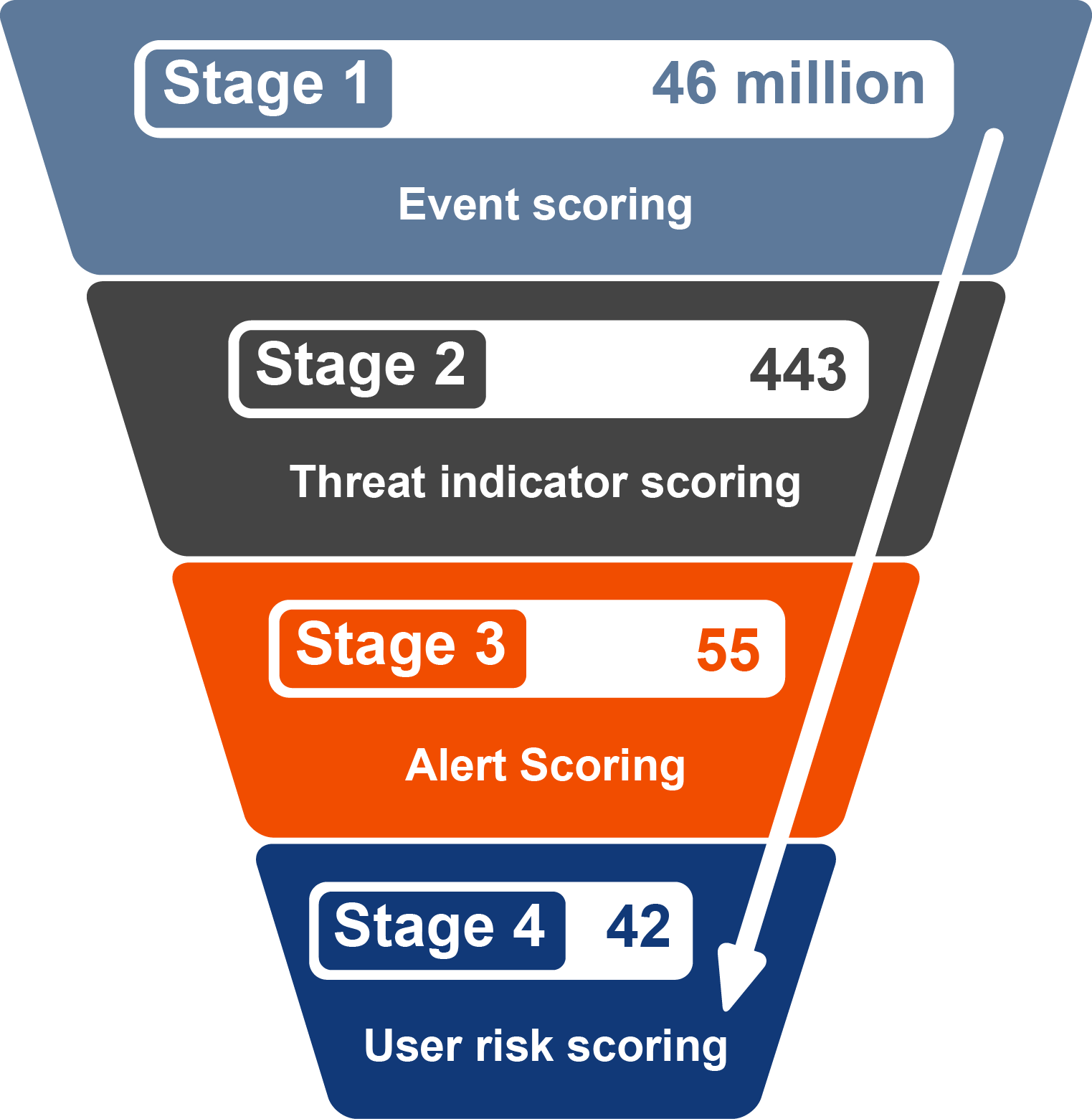Introduction to Change Auditor Threat Detection
Overview
Which Change Auditor modules are monitored?
Threat Detection server events
Threat detection concepts
Threat Detection process
Using the Threat Detection Dashboard
Deployment and installation
Accessing the dashboard
Overview tab
Users tab
Alerts Tab
Common functions
Alert and indicator reference
Risk scoring
Figure 1. Event scoring stages
Threat Detection process
Threat Detection process includes the following steps:
|
4 |

